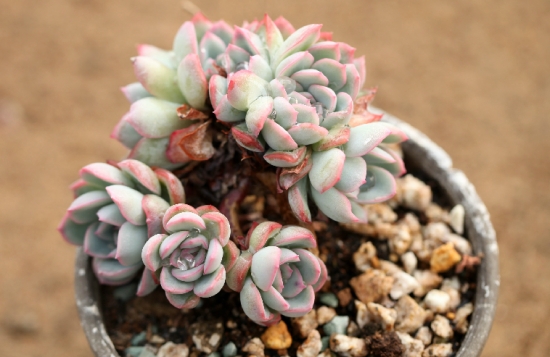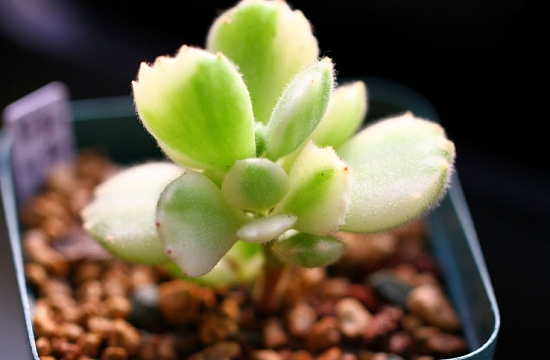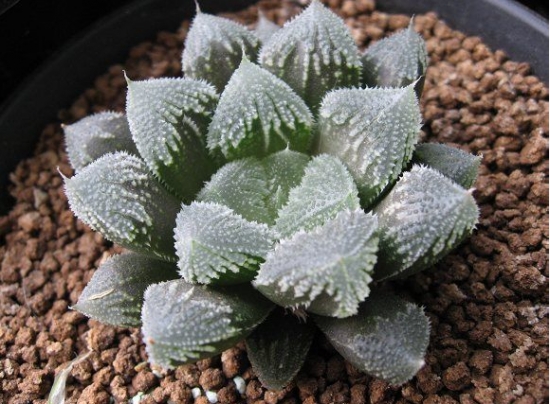Techniques for fertilizing succulent plants. An article will let you know how to fertilize succulent plants.
Fertilizing succulent plants has always been one of the difficult problems for flower friends, such as when to fertilize succulent plants, what fertilizers to apply, what to pay attention to, and so on. In the face of these problems, some flower friends summed up the 4W 1H 1L rule. Let's read on and understand it.

4W 1H 1L rule of fertilization
1. What kind of fertilizer is applied to "What"?
1. Special granule slow-release fertilizer, this kind of fertilizer will gradually release fertility with the increase of temperature and will not burn the root directly.
2. Nitrogen fertilizer can promote trees to flourish, increase chlorophyll and strengthen vegetative growth; too much nitrogen fertilizer will lead to soft tissue, long stems and leaves, vulnerable to diseases and insect pests, and reduce cold tolerance; lack of nitrogen fertilizer will lead to small plants, yellow-green leaves and slow growth. Can't bloom. Nitrogen mainly comes from nitrogen in the air and dissolves in Rain Water through oxidation. If Rain Water drenches too much, the succulent plant will grow too much. Including ammonium bicarbonate, urea, ammonium nitrate, ammonia, sodium chloride, ammonium sulfate and so on.
3. Phosphate fertilizer can make the stems and branches of trees tough, promote the formation of flower buds, large and colorful flowers, and can make succulent plants grow well, produce more new roots, and improve the ability of cold and drought resistance; lack of phosphate fertilizer makes trees grow slowly, leaves are small, branches or tillers decrease, flowers and fruits are small, mature late, and the veins of the lower leaves yellowing first and then purplish red. Phosphorus mainly comes from tap water, although the content is low, as long as you are not breeding for succulent flowers, it is enough for succulent plants. Including ordinary calcium superphosphate, calcium magnesium phosphate fertilizer and so on. Animal bones are also rich in phosphorus, so mixing a small amount of bone powder into the pelvic floor can promote succulent roots.
4. Potash fertilizer can make tree stem strong, improve the ability of disease and insect resistance, cold resistance, drought resistance and lodging resistance, promote root development, bulb root enlargement, fruit expansion and good color; potassium deficiency will lead to necrotic spots on the leaf edge of trees, initially spots on the lower old leaves, leaf tips begin to turn yellow, and then scorch necrosis occurs. Excessive potassium fertilizer will cause shortening of internodes, dwarfing of the whole plant, yellowing of leaf color, wilting, and even death. Potassium mainly comes from granular soils such as laterite and volcanic rocks. At present, it is not used much, and the main varieties are potassium chloride, potassium sulfate, potassium nitrate and so on.
When will "When" be fertilized?
- Prev

Breeding methods and matters needing attention of succulent plant white bear
The succulent bear boys with chubby claws have captured the hearts of many flower friends, including white bears and green bears. Today we will talk about how to raise white bears. Some flower friends think that white bears are the same as green bears. In fact, this understanding is incorrect.
- Next

Watering experience of twelve rolls of succulent plants
Succulent twelve rolls, is a more popular small succulent plant in recent years, its variety, shape, small and exquisite, elegant, very suitable for personal cultivation and ornamental. If you want to raise a lot of meat in twelve rolls, water management is a very important part. There are twelve volumes.
Related
- Wuhan Hospital Iron Tree Blooming Result Was Instantly Frightened by the Gardener Master
- Which variety of camellia is the most fragrant and best? Which one do you like best?
- What is the small blue coat, the breeding methods and matters needing attention of the succulent plant
- Dormancy time and maintenance management of succulent plants during dormancy
- Minas succulent how to raise, Minas succulent plant pictures
- What are the varieties of winter succulent plants
- How to raise succulent plants in twelve rolls? let's take a look at some experience of breeding twelve rolls.
- Attention should be paid to water control for succulent plants during dormant period (winter and summer)
- Watering experience of twelve rolls of succulent plants
- Techniques for fertilizing succulent plants. An article will let you know how to fertilize succulent plants.

